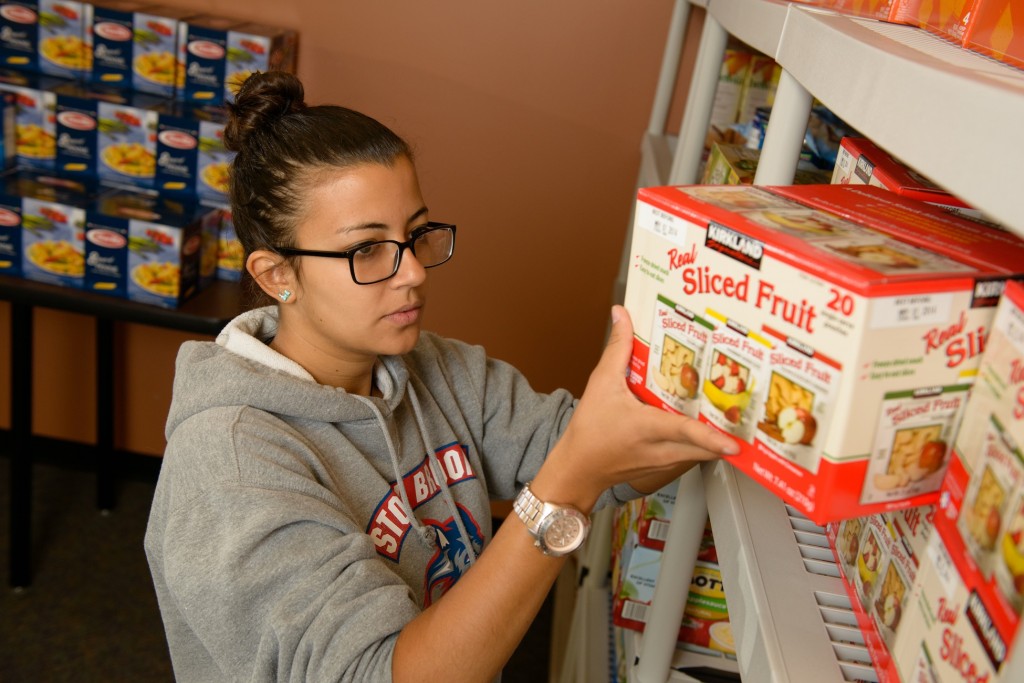Students United for Action is a group started by Matthew Sacco, an English and Philosophy senior. It was formed to tackle large student issues through personal and direct communication.
Using his own money, Sacco started a campaign to call attention to the issue of sexual assault by distributing glow sticks taped to a brochure. The glow sticks were used as a conversation starter as the students read the information about being careful, being aware, and some suggestions for empowering a bystander to intervene.
Student safety activists distribute messages about preventing sexual assault and empowering bystander intervention.
Sacco started in August by handing out 100 brochures and glow sticks a week at popular locations on campus as students decided their plans for the evening.
His goal was to have more peer-to-peer conversations. “Talking directly with the students engages them and encourages them to help themselves,” said Sacco.
He soon recruited nearly a dozen other student safety activists to help, and the distribution grew to 1,000 a week as the semester went on. Support and volunteers to assemble the kits came from several areas on campus such as Center for Prevention and Outreach and the H Quad Residence Hall.
31 Days of Giving Back Summary
For the month of December, we have shared some of the many ways Stony Brook University gives back to the community. Students, faculty and staff offer thousands of hours of engaged service each year. From raising the spirits of a child in the hospital to sharing the gift of music to cleaning our local parks, volunteerism and community service is the core of the Stony Brook campus. For the future, Stony Brook will continue to find new ways of connecting our energy, resources and spirit with those in need.



